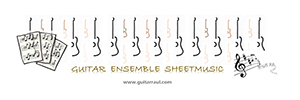Alexander Dunn
http://alexanderdunn.ca/?page_id=
Robert de Visée (ca. 1660-1732) was among the most outstanding exponents of the French Baroque guitar and theorbo. His corpus of works for the latter instrument have to date not received proper attention in either performance or written study. Chapters 1 and 2 assemble the available biographical information, most of which has not been fully translated nor previously available in English. Special emphasis is placed on de Visée’s activities at the court of Versailles and on his ensemble appearances as a theorbist. These sections attempt to synthesize historical data into a general picture of the composers role at the court; this is then placed into an historical-musical context with de Visée’s contemporaries. Chapters 3 is a brief historical examination of the instrument, focussing on its appearance and use in France. Its invention in Italy and subsequent Gallic adaption is reviewed, as are physical descriptions and period lexicographic references, all of which contribute in part to its French identity. The fourth chapter is a purposefully narrow comparison of the French theorbo with two of it most important influences. Firstly, plucked string figurations (as outgrowths of vocal continuo practices) is suggested as a compelling aspect of the theorbo’s solo development. Of particular relevance to this comparison is an air of de Visée published in 1732, reproduced here for the first time in modern notation. An equally important impression was made by the new French viol, displaying many similar traits in repertoire and playing techniques. De Visée’s reputation as a viol player is examined in the context of the French viol repertory, and his participation in the infamous embroilment between de Machy and Rousseau is explained. Chapter 5 cites and describes the available sources for the works of de Visée, all of which have been consulted. Following this description, the actual repertoire is analyzed in terms of differing systems of notation and alternate versions of given works. Musical style is then defined as a result of linear writing and how conjunct flow affects phrasal periods, internal voicings, bass line shapes, and harmonic language. Finally, genres and groupings are seen to both typify the period and to foreshadow galant principles. Appendix 1 is a full English translation of the composers remarks from printed sources. Appendix 2 gives a transcription of a cluster of pieces from tablature, and Appendix 3 shows concordances between the sources examined.
Style and Development in the Theorbo Works of Robert de Visée: An Introductory Study





